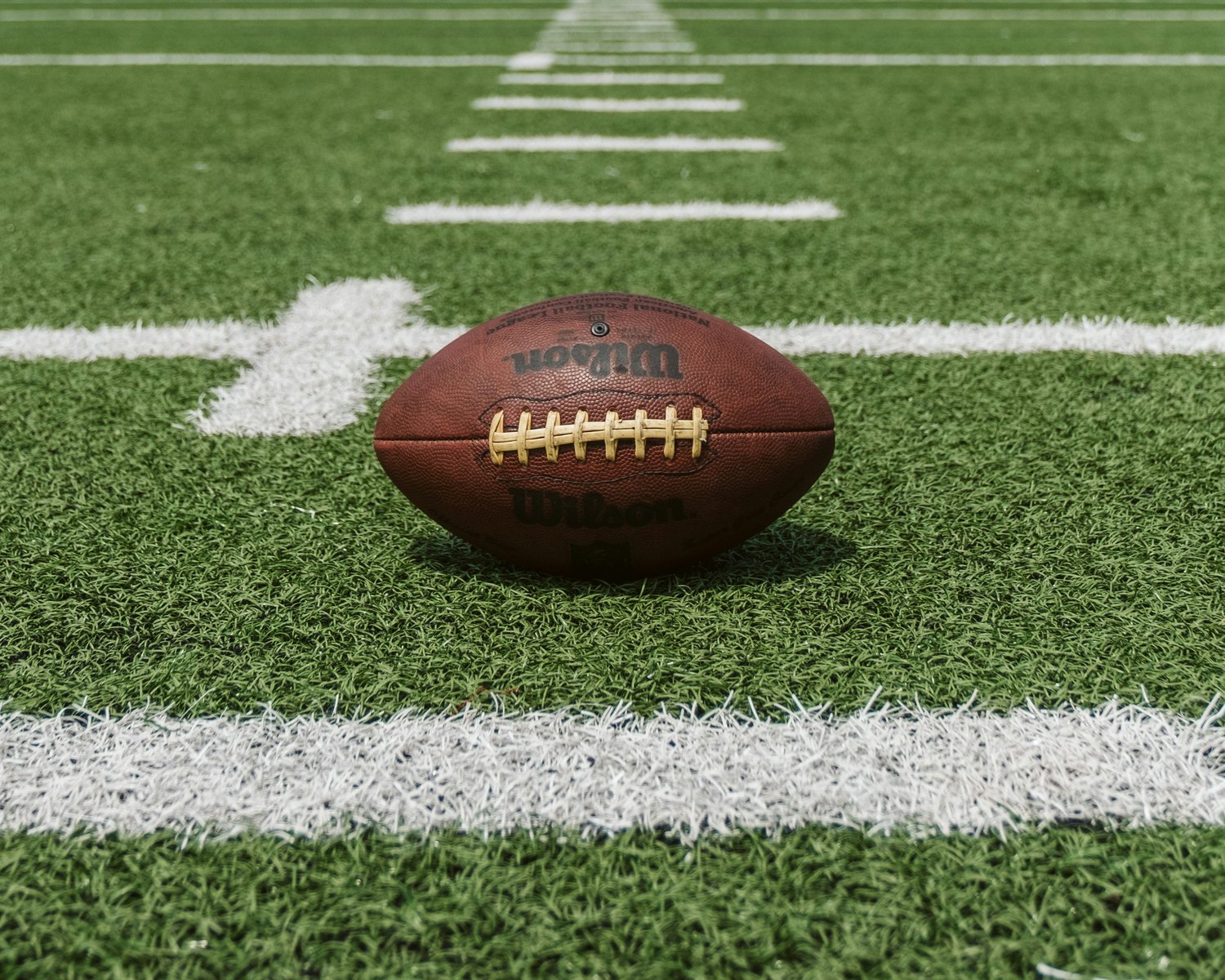Image: https://unsplash.com/photos/brown-and-black-wilson-football–nATH0CrkMU
The scope of football has changed over the years. It is no longer just about the ball, the cheering fans, or the football pitch; it is now in-depth, quantified, tracked, and analyzed data. Wearable technology is changing the way players train, recover, and perform, with smart devices that are disguised as everyday equipment. It may not be science fiction, but the advances that are being made on training grounds and during real matches border on it. Why are these tiny devices viewed as gold by coaches, analysts, and players alike? What’s the secret? We will cover this in the article.
The Power of Biosensors
A biosensor is a device that tracks an athlete’s physiological measurements while an activity is in progress, including heart rate, body temperature, hydration levels, and blood oxygen concentration. Teams like Manchester City, Real Madrid, and Bayern Munich have integrated biosensors into their training routines. For instance, Catapult Sports has vests that collect data at a rate exceeding a thousand samples per second. Currently, more than 3.5 million athletes across 137 countries use these sensors. This can confidently be described as more than just a fad. The primary aim is to extend the period of the player’s physical peak.
This technological penetration into the physiology of an athlete raises an important question: where else does data become a decisive factor? The answer is everywhere, and there is an element of strategy, risk, and analysis. That is why en iyi iddaa siteleri are so popular today – they combine advanced analytics with instant access to relevant information, turning a bet into an informed decision. These are not just sites – they are next-generation platforms, as smart and dynamic as the biosensors themselves. And in a world where every heartbeat can be measured, every bet becomes more accurate, deeper, more confident.
Image: https://unsplash.com/photos/a-close-up-of-a-bunch-of-beads-VBILxgixGRg
How Sensors Track Players’ Health
Biosensors are not only advanced gadgets; they are important devices that provide useful information. Such tiny devices decode how the body functions under pressure. Here’s how they perform their magic:
Heart Rate Variability (HRV): Through measuring the time between heartbeats, sensors such as the Polar H10 or Whoop Strap assist coaches in assessing how well a player has recovered from previous exertion.
Core Temperature Monitoring: As an example, the E-Celsius ingestible capsule actively monitors a person’s core temperature, which is a crucial indicator of extreme physical overload, especially in harsh weather conditions.
Oxygen Saturation (SpO2): Used by teams like Juventus and PSG, pulse oximeters monitor the available oxygen in the blood and expose some advanced signs of tiredness and respiratory complications.
Sweat Analysis: Some sensors measure the rate at which electrolytes are expelled in sweat. As an illustration, Gatorade’s GX Patch assists in ascertaining hydration levels and also informs when rehydration becomes necessary.
With these capabilities, staff can intervene before exhaustion sets in, reducing the risk of injury and optimizing performance. Every drop of sweat is now data, every heartbeat is a signal. This is not just a sport, it is science, emotions, and care for every movement. And to not just read about it, but to feel the pulse of the game, take a look at Instagram MelBet. There you will find the latest sports news, memes that will make you smile, and rare promo codes that make betting more enjoyable and profitable. Subscribe to be closer to sports than ever.
Measuring Fatigue in Real Time
Biosensors monitor slight variances in performance metrics over time, and fatigue is a dip in performance that can be measured, not just an overall sense of tiredness. The technology picks up on discrepancies when a player’s running pace, stride length, or reaction time changes, even in the slightest. As an example, a player’s sprint frequency dipping below 90% of their average in the second half is concerning, especially if that’s occurring during the second half.
Throughout the 2023 UEFA Champions League, Kevin De Bruyne’s micro-movements were tracked via GPS sensors by Manchester City as they noted a 17% decline in his acceleration during the last 20 minutes. That data enabled the medical staff to modify his training session for the following week. It is not only possible, but paramount, that we can strategically identify fatigue in real time.
The Science Behind Fatigue Detection
Fatigue is associated with one or more of the muscular, cardiovascular, and neurological systems. A biosensor tracked several markers, including elevation of lactate concentration, increased body temperature, and slower reaction times — all scientifically linked to fatigue.
An example would be FC Barcelona and their tracking of heart rate zones. When players exceed the “zone 5” (90–100% of max heart rate) for a certain period of time, staff can track the accumulated stress. FC Barcelona also uses the information from the jump test in combination with the subjective wellness score. The players are monitored to detect fatigue before it can be seen during the games. Technological advances such as this allow for more precise management of player schedules; modified schedules have been set for players like Pedri and Gavi. It is no longer a wild guess; now they know.
Smart Wearables for Smarter Decisions
Smart wearables integrate technology into sports. But in what ways do they assist coaches in making decisions? Here is an overview of the essential differences related to some popular devices:
Armed with this data, coaches can optimize training sessions to prevent burnout, maximize decision-making capabilities, and prolong sporting careers.
Image: https://unsplash.com/photos/a-persons-hand-on-a-table-with-a-chain-attached-to-it-oRZJSFcFjNk
Preventing Burnout Before It Happens
Burnout is not only caused by excessive gaming, but tends to build up from a player’s ‘silence’ in between games. Dormant burnout can arise from overtraining, lack of proper sleep, and emotional stress. Biosensors play a great role in identifying these symptoms at their earliest form. One of many instances was when Bayern Munich monitored Joshua Kimmich’s sleep patterns using Whoop. Staff noticed irregular sleep patterns and altered his travel and training schedules, preventing him from overexerting himself.
In another instance, PSG saw that Neymar’s HRV readings had significantly dropped, despite him training regularly. This trend suggested underlying fatigue, and PSG decided to implement a light recovery protocol. This enabled him to avert a muscle injury that would have kept him out of the game for weeks. Proactive care like this would not be possible without biosensors.
From Data to Action on the Field
Raw data is of no significance until something is done with it. Modern football relies on biosensors to manage daily operations. Here is how they convert numbers into tangible outcomes:
Training Session Adjustments: Staff lower the intensity of training sessions due to fatigue markers like soreness, as implemented by the performance staff at Liverpool.
Recovery Protocols: Personalized recovery strategies — such as ice baths, massage, and sleep optimization — are enabled by biometric data.
Tactical Substitutions: Real-time data on sensors and tactical screens can influence substitutions where a player’s sprint metrics are within a set threshold but quite low compared to expectations.
Player Transfers & Contracts: Clubs determine long-term injury health and stable performance prior to major signings with months’ worth of biosensor data from numerous other players.
This is not mere innovation but a complete innovation in the operation, management, and strategy of the game.
A New Era in Player Care
The focus is not solely on science, but rather on humanity: how a player’s physique narrates a story through numbers. We are moving towards a time when players can be both attended to and safeguarded, where biosensors will enhance rather than detract from the game. They enable us to enjoy advanced players, extended careers, and deeper stories. This is football, evolving with passion, logic, and technology intertwined.



